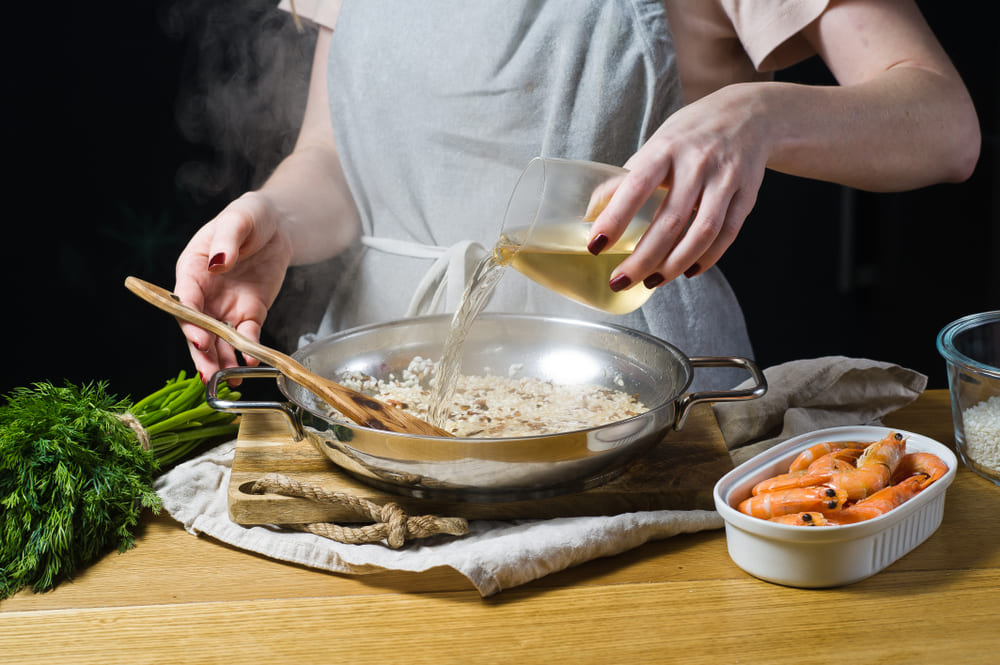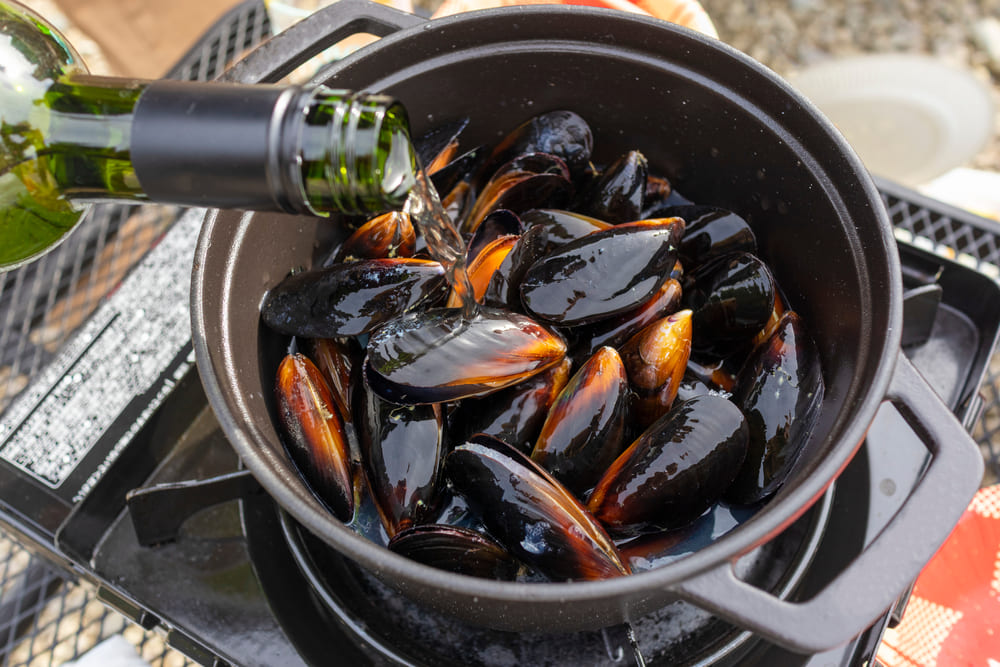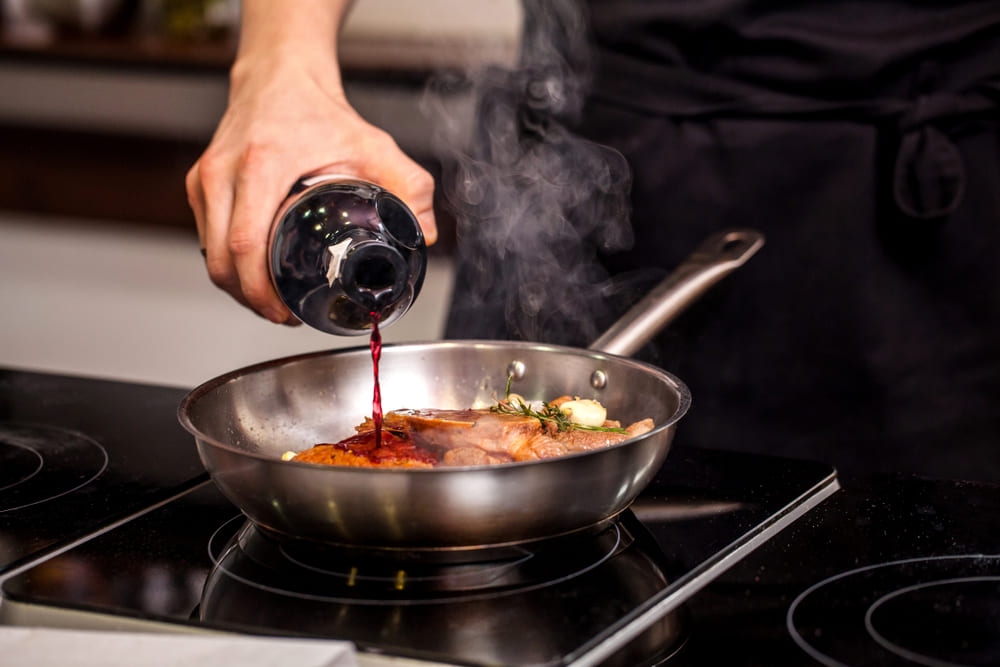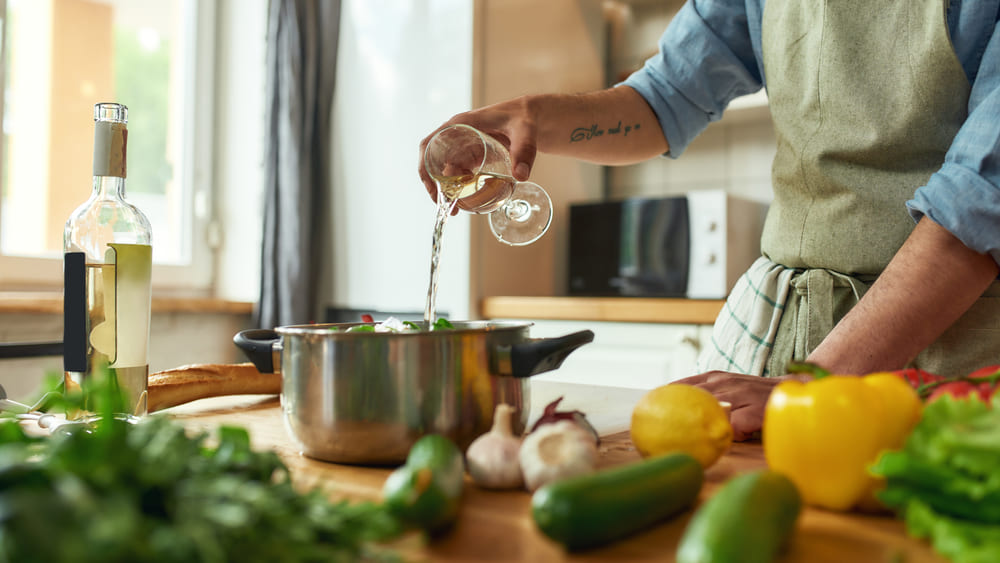Cooking with wine is almost as good as sipping on it. Adding wine to your favorite stews, sauces, and marinades adds rich and complex flavors that can’t be achieved with other ingredients.
When it comes to cooking with wine, there’s something for everyone. You can braise beef with red wine, deglaze a pan of veggies with white wine, or something in between. Find what works for you, and run with it. Just like with wine and food pairings, don’t be afraid to experiment a little bit—you’ll discover flavor combinations you’ve never experienced before.
Before you go too crazy, though, check out our guide below to know what methods to embrace and which ones to avoid when cooking with wine.
Why Cook With Wine?
Whether you’re drinking it or cooking with it, wine complements food. It adds complexity and unique flavors, even when it’s cooked down. Wine’s acidity, tannins, alcohol content, and sugar content not only impact the flavor of the wine itself, but also the flavor of the foods you cook it with.
Tannins, for example, become less potent when cooked with meat or stock because they attach to proteins during the cooking process. This binding of the tannins to the proteins softens the wine’s flavor for a smoother finish. When you cook food after adding wine to it, the alcohol evaporates. But if you add wine to a dish after it has already been cooked, it becomes even more potent.
5 Wine Cooking Tips
Wine is versatile and can enhance the flavors in various dishes. You can use wine for marinades, reductions, sauces, and more. But there’s a right and a wrong way to use it. Let’s take a look at how to cook with wine and what wines to use for certain dishes.

If You Wouldn’t Drink It, Don’t Cook With It
Although wine ends up evaporating in most recipes that call for it, you should still use a quality bottle. While you don’t need an expensive wine, you should avoid cheap wines that you wouldn’t even sip from a glass. If wine doesn’t taste good when you drink it, it probably won’t taste good when you cook it, either.
That’s because even when wine cooks down, its dominant features still shine through. If wine tastes too sweet, tannic, or acidic straight out of the bottle, it will taste too sweet, tannic, or acidic in a cooked dish.
Make A Wine Marinade
A tasty marinade can enhance the flavor profile of any meat-based dish. Marinades break down and seep through the tissue in raw meat, making it more tender and flavorful. Wine is a great marinade option, making the final product more complex and acidic. You can even sweeten a dish by boiling the wine so some of the alcohol evaporates, allowing the fruity notes to take center stage.
Try Cooking With White Wine
Choosing the best white wine for cooking is difficult if you don’t know what qualities to look for and which ones to avoid. One way to determine what type of white wine you should cook with is to consider what type of white wine you would drink alongside the dish. For example, dry wines like Pinot Grigio and Sauvignon Blanc are ideal for savory dishes. Avoid sweet wines like Riesling and Moscato altogether when cooking with white wine, as the sweetness can overpower the food’s best flavors.
White wine pairs best with poultry, seafood, and dairy-based soups and sauces. Its acidity balances out these often rich, creamy dishes and helps clear the palate between bites. You can deglaze a pan with white wine to scrape up the delicious caramelized bits left behind. White wine can also be used when cooking sauces, steaming meats and vegetables, and crafting desserts.

Cook Up a Red Wine Recipe
If you’re cooking with red wine, here are some things you should avoid.
- Tannic wines: A bottle of wine with a high tannin content can make the food bitter as it cooks down.
- Super sweet wines: Overly sweet red wines will make your food overly sweet, too.
Instead, opt for a mildly dry red wine like Pinot Noir for cooking dishes like Beef Bourguignon—a traditional French dish cooked with Red Burgundy— and Merlot for rich, darker-colored sauces. You can also use red wine to marinate beef, braise meat, roast vegetables, and make a reduction. Heavy red wine gives stews, pasta sauces, braised meats, and beef tenderloin a rich, earthy flavor. Lighter reds are a more versatile option that works well with various dishes.

Add Wine Sooner Rather Than Later
If you’re cooking with wine, don’t wait too late to add it to your dish. Adding wine to a dish at the very end will increase its acidity and tannins, making it even more potent. Remember, the goal of cooking with wine is to enhance the dish’s flavor, not overpower it. Adding a whole bottle of wine to your recipe at the very end won’t yield the results you’re looking for. Keep an eye on the clock, and add wine to your dish while it’s still cooking to remove some of the alcohol content and soften the tannins.
For long-simmering stews, braises, and sauces, add the wine as soon as the liquid starts simmering and after the other ingredients have been browned. Cook off some of the alcohol by letting the wine reduce. Once the wine reduces, add stock, broth, or any other liquids you’re using.
Cooking With Wine FAQs
Have any lingering questions about how to cook with wine? See if the FAQs below have the answers you need. If not, feel free to contact us for more information. We’d love to hear from you.
Does cooking with wine remove the alcohol?
Cooking with wine removes some of its alcohol content but not all of it. The longer the wine cooks, the more alcohol will evaporate.
Can you cook with leftover wine?
Have a bottle of wine in the fridge left from your Bachelor watch party the other night? Don’t pour it out. Use it to elevate whatever dish you’re making for dinner tonight. You can add a splash of white wine to a creamy sauce or freeze leftover red wine into ice cubes for easy use when cooking.
What is a good substitute for wine in recipes?
Whether you’re out of wine or want to cut back on your wine intake, you can substitute white wine with liquids like:
- Vermouth
- Stock
- Chicken or beef broth
- Apple cider vinegar
- White wine vinegar
- Lemon juice
Discover Delicious Cooking Wines at WCG
Whether you’re planning a dinner for one or a dinner party, the right cooking wine will bring out the best flavors in any dish you prepare. Our Cellar Collection features boutique-style red and white wines from around the world. From dry reds for short ribs to acidic whites for shrimp scampi, the Wine Cellar Group has it all. Browse the collection today to find the right wine to cook with your next meal.






Leave A Comment